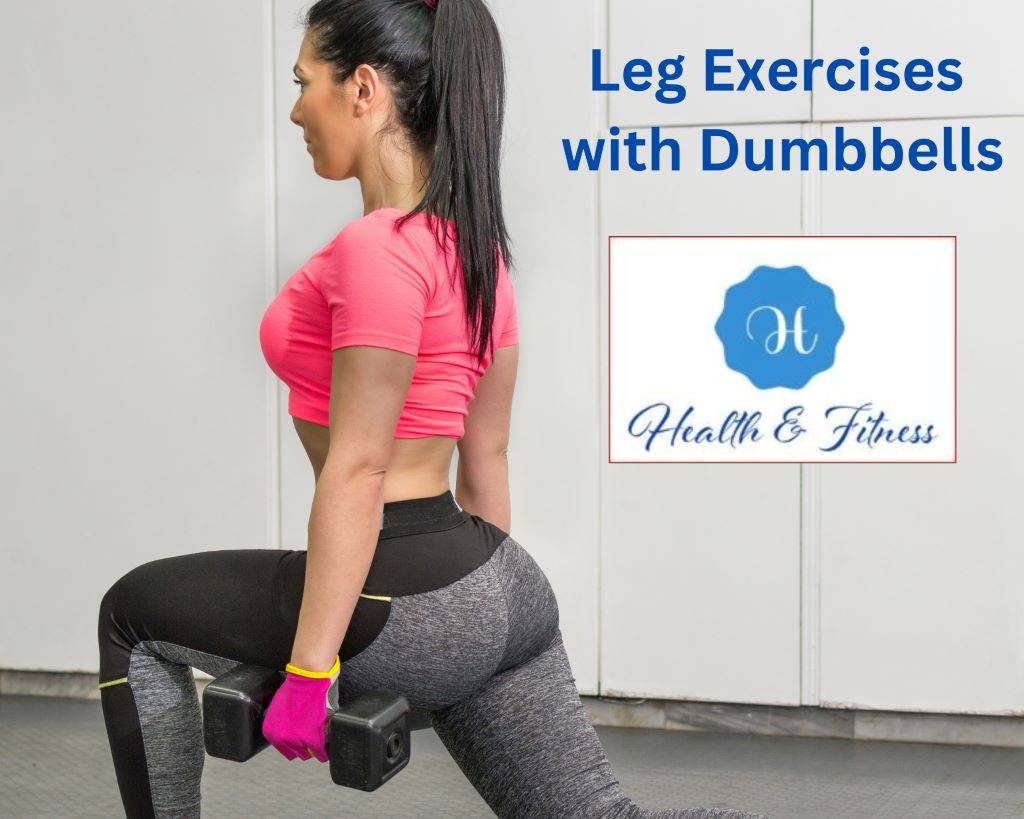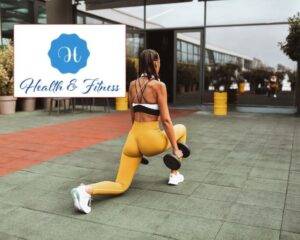Leg Exercises with Dumbbells: Boost Your Leg Strength and Stability
When focusing on developing strength and stability in the lower body, leg exercises with dumbbells are an excellent addition to your fitness routine. Incorporating dumbbells into your leg workouts not only increases the intensity, but also targets a broader range of muscles for improved balance, stability, and overall performance. In this article, we will explore the top leg exercises with dumbbells to boost your leg strength and stability, as well as answer frequently asked questions related to these exercises. Please note that some exercises may not be suitable for individuals with certain health conditions or limitations. Seek professional guidance before starting a new exercise regimen.
Introduction to Leg Exercises with Dumbbells
Dumbbells are versatile and practical tools for resistance training, and incorporating them into your leg workouts can provide numerous benefits. They allow you to isolate specific muscle groups, increase the intensity of your workouts, and improve your overall leg strength and stability. Additionally, leg exercises with dumbbells are often more functional, as they mimic real-life movements and require you to engage your core and other stabilizing muscles.
Benefits of Leg Exercises with Dumbbells
Some of the key benefits of including dumbbell exercises in your leg workouts include:
- Increased muscle activation: Dumbbell exercises often require you to engage more muscles than their machine-based counterparts, leading to better muscle activation and overall development.
- Improved balance and stability: By challenging your stabilizing muscles, dumbbell exercises can help improve your balance and strength, leading to better overall performance in sports and daily activities.
- More excellent range of motion: Dumbbells allow for a more fantastic range of motion than machines, making these exercises more functional for building strength and flexibility.
- Versatility: Dumbbells are highly versatile, allowing you to perform a wide variety of exercises targeting different muscle groups and providing endless possibilities for your workouts.
- Accessibility: Dumbbells are relatively affordable and easy to store, making them an excellent option for home workouts or for those who don’t have access to a gym.
Top 10 Leg Exercises with Dumbbells
Here are the top 10 leg exercises with dumbbells to boost your leg strength and stability:
Dumbbell Goblet Squat
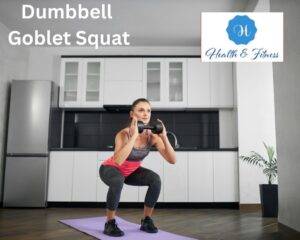
How to: Hold a dumbbell vertically with both hands under your chin, keeping your elbows close to your body. Assume a stance with your feet positioned at a width similar to that of your shoulders, then lower yourself into a squat by flexing your knees and pushing your hips rearward. Rise back to the initial position and replicate the movement.
Dumbbell Step-Up
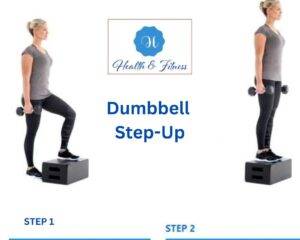
To perform this exercise, first, grasp a dumbbell in each hand and position yourself in front of a bench or step. Then, place your right foot on the stage and push through your heel to lift your body. Descend once more and replicate the movement on the opposing side.
Dumbbell Bulgarian Split Squat
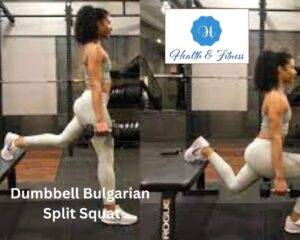
How to: Grasp a dumbbell in each hand and position yourself to face opposite a bench or step. Position your left foot on the bench behind you and proceed to lower your body into a lunge by flexing your right knee. Maintain an upright chest and engaged core throughout the movement. Return to the initial stance and replicate the exercise on the opposite side. This exercise primarily targets the quadriceps, glutes, and hamstrings.
Dumbbell Stiff-Legged Deadlift
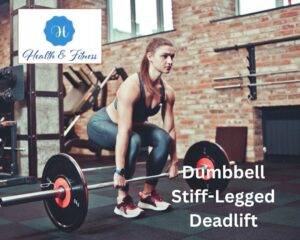
How to: Grasp a dumbbell in each hand, ensuring your feet are spaced at the width of your hips while maintaining a slight flexion in your knee. Hinge at your hips and lower the dumbbells toward the ground, keeping your back straight and chest lifted. Return to the starting position and repeat.
Dumbbell Reverse Lunge
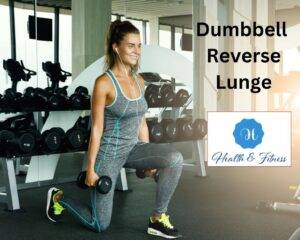
How to: With a dumbbell in each hand, assume a standing position where your feet are spaced apart at the width of your hips. Proceed to move your right foot back into a lunge, lowering your rear knee toward the ground. Engage your left heel to propel yourself back to the initial stance and replicate the movement on the opposing side.
Dumbbell Calf Raise
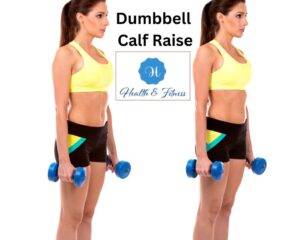
How to: Grasp a dumbbell in both hands and position yourself with your feet spaced apart at the width of your hips. Raise your heels off the ground, pushing through the balls of your feet. Lower your heels back down and repeat.
- Muscles worked: Calves.
Dumbbell Side Lunge
How to: Hold a dumbbell in each hand and stand with your feet shoulder-width apart. Begin by stepping your right foot out to the side, simultaneously bending your right knee, and pushing your hips back to perform a side lunge. Utilize the strength of your right heel to propel yourself back to the starting position. Repeat the movement on the opposite side to complete the exercise.
Dumbbell Glute Bridge
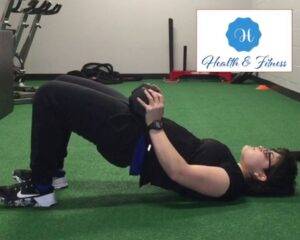
How to: Assume a prone position, with your knees flexed and feet resting flat on the floor. Place a dumbbell horizontally on your hips. Propel your hips upward by pressing through your heels while simultaneously contracting your glutes at the pinnacle of the movement. Gently descend your hips and replicate the exercise.
Dumbbell Single-Leg Deadlift
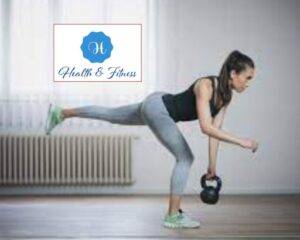
- How to: Hold a dumbbell in your left hand and stand on your right foot. Hinge at your hips and lower the dumbbell toward the ground, keeping your back straight and chest lifted. Push through your right heel to return to the starting position and repeat on the other side.
Dumbbell Curtsy Lunge
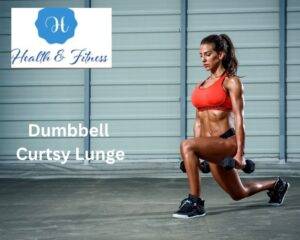
How to: Begin by taking hold of a dumbbell in each hand, establishing a firm grip. Assume a standing position, ensuring that your feet are spaced apart at a width comparable to that of your hips. Next, initiate the movement by stepping your right foot diagonally behind your left leg, creating a diagonal alignment. Simultaneously, lower your rear knee towards the ground, maintaining control throughout the motion. Engage your left heel to propel yourself back to the initial stance and replicate the movement on the opposing side. This exercise primarily targets the quadriceps, glutes, hamstrings, and inner thighs.
When Working Your Legs, What Weight Dumbbells Should You Use?
Choosing the appropriate weight for your leg exercises is crucial for maximizing results and minimizing the risk of injury. It’s essential to find a weight that challenges your muscles without compromising your form. Here are some guidelines to help you determine the right weight for your dumbbell leg exercises:
- Start Light: If you’re new to leg exercises or unsure of your strength level, begin with lighter dumbbells. By prioritizing the mastery of correct form and technique, you lay the foundation for advancement to more substantial weights in due course.
- Moderate Intensity: As a general guideline, choose a weight that allows you to perform 8-12 repetitions with proper form while feeling an average level of difficulty. This range ensures you’re working within an optimal intensity for muscle growth and development.
- Listen to Your Body: Every individual is unique, and what works for one person may not work for another. Pay attention to your body’s signals during the exercises. If you’re consistently able to complete the prescribed repetitions without feeling challenged, consider increasing the weight. On the other hand, if you’re struggling to maintain proper form, decrease the weight.
Remember, it’s always better to start with lighter weights and gradually progress as your muscles become stronger and more conditioned. This approach promotes gradual adaptation, reduces the risk of injury, and allows for long-term progress.
Frequently Asked Questions (FAQs)
How heavy should the dumbbells be for these leg exercises?
The weight of the dumbbells used for these leg exercises will vary depending on your fitness level and individual goals. When choosing a consequence for your activities, it is crucial to find the right balance. This entails selecting a weight that presents a suitable level of challenge while allowing you to maintain proper form throughout the exercise. If you’re uncertain about the ideal weight, seeking guidance from a fitness professional is recommended. Alternatively, you can start with lighter dumbbells and accumulate the weight as you gain strength and confidence in performing the exercises.
- How often should I perform these leg exercises with dumbbells?
For optimal results, aim to incorporate these leg exercises with dumbbells into your workout routine at least two to three times per week. Be sure to allow adequate recovery time between sessions to promote muscle growth and prevent injury. - Can I combine these leg exercises with other forms of exercise?
Absolutely! These leg exercises with dumbbells can complement other forms of exercise, such as cardiovascular training, yoga, or bodyweight workouts. Mixing up your fitness routine can help keep you motivated and prevent workout plateaus.
What is the typical timeframe for observing results from engaging in these dumbbell leg exercises?
The time it takes to see results from incorporating dumbbell leg exercises into your routine depends on various factors. These factors include your initial fitness level, dietary habits, and how consistently you perform your workouts. Individual differences play a role in determining the duration needed to observe outcomes.
Conclusion
Integrating dumbbell leg exercises into your regular fitness regimen presents a compelling opportunity to enhance leg strength and stability, simultaneously engaging multiple muscle groups. These exercises not only inject diversity into your workout routine but also foster functional fitness, amplifying performance in athletic endeavours and everyday tasks while contributing to overall well-being. Embrace the chance to challenge yourself with a set of dumbbells as you embark on these empowering exercises. Remember, safety and correct form are paramount. Thus, seeking guidance from a qualified healthcare professional or fitness expert is essential before embarking on any new exercise program.
Reference
American Council on Exercise. (n.d.). Dumbbell Calf Raise. Retrieved from
You may be interested in

